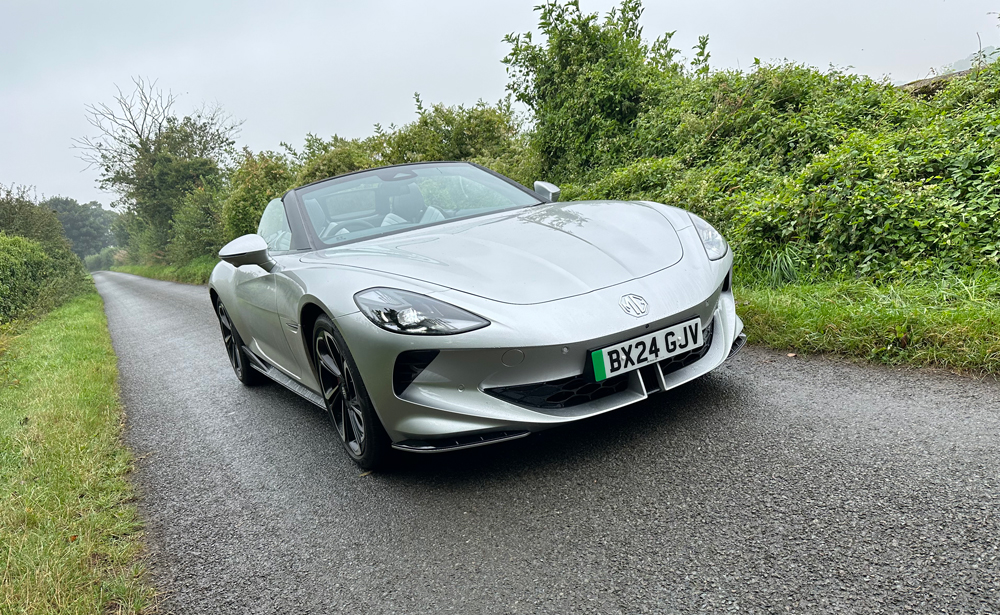
MG
Cyberster
MG has launched its Cyberster, a stunning two-door, two-seat roadster that is fully electrified and looks amazing when approached from any angle.
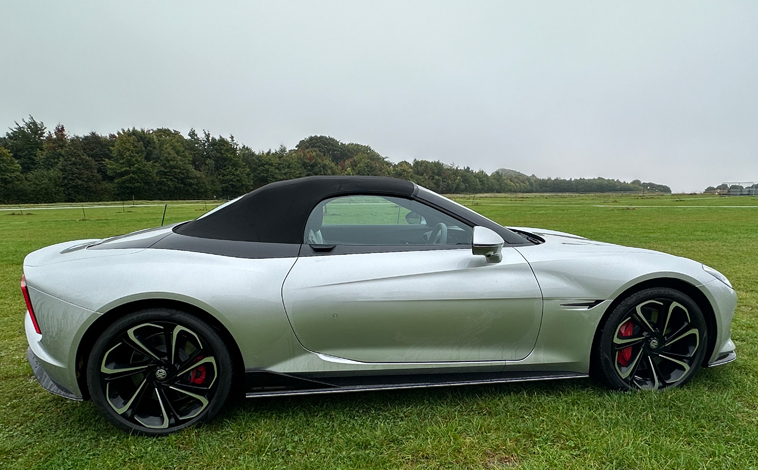
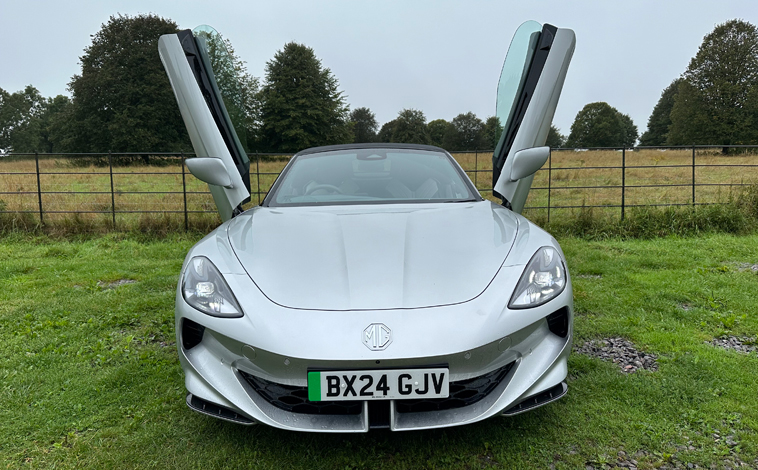
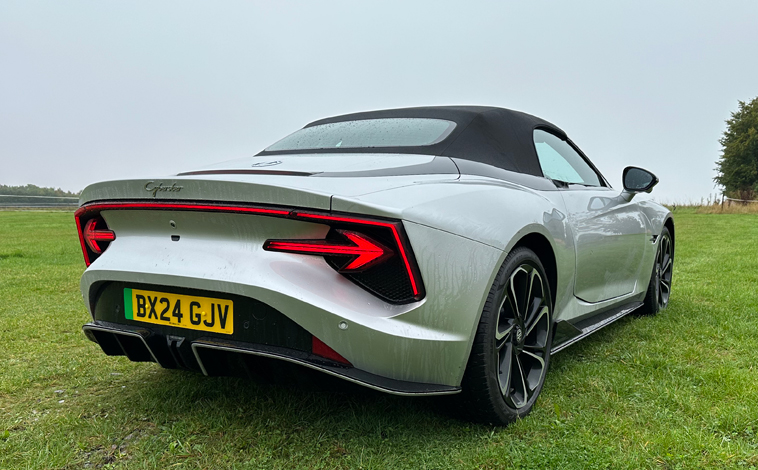
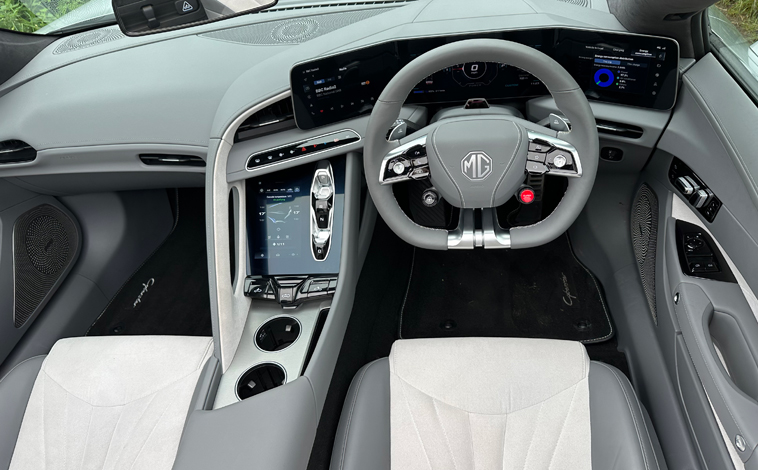
The good
The look and those scissor doorsThe bad
Too many infotainment screens and high seatsTech Specs
Test Drive
MG Cyberster – First Drive (2024)
There was a time when MG was British owned and it regularly developed gorgeous and desirable sports cars that were driven by royalty and film stars alike.
However, the company faced significant challenges and eventually fell on hard times. After a while, it was acquired by Shanghai-based SAIC and in the years that followed, several new models emerged in the UK adorned with the MG badge, but none truly honoured its illustrious sporting heritage.
Well, nothing until now that is. Because MG has just launched the Cyberster, a two-seat roadster with electrically-powered roof and dramatic scissor doors that are also powered for extra flair.
The Cyberster is fully electric and comes in two trims, both equipped with a 77kWh battery. The rear-wheel-drive, single motor Trophy model is priced at £54,995, delivering 340PS and 475Nm of torque, and can go from 0-62mph in 5.0 seconds, with a top speed of 121mph. For an extra £5,000, the Cyberster GT offers a dual-motor all-wheel-drive set-up with 503PS and 725Nm of grunt, reducing the 0-62mph sprint time by almost two seconds and reaching a top speed of 125mph. Despite its thrilling performance, the range remains respectable at 316 miles for the Trophy and 276 miles for the GT.
The Cyberster is a real head-turner on the road. It has a bold, powerful presence, with sculpted haunches, a chunky rear end, sweeping light clusters, LED daytime running lights, and a powered fabric roof. The GT version, as tested, adds 20-inch alloy wheels with red brake calipers for an extra touch of style. The scissor doors open upwards and outwards via switches inside the vehicle or buttons on the key fob, making them as practical as they are eye-catching, especially in tight parking spots.
Moving inside, the cabin feels premium and features a driver-focused curved triple-screen layout. The central 10.25-inch driver display provides key information like speed, battery charge and range, and this is flanked by two seven-inch screens – the left one shows the car’s state of health with readouts on tyre pressures and the likes, while the right screen is more media based. You can even check the forecast – an added bonus on any convertible!
There is also a fourth screen to control climate functions, including heated seats and steering wheel settings. And the powered seats come with memory functions, which is helpful for shared use.
Comfort-wise, the seats are supportive without feeling too snug. However, even in its lowest position, the driver’s position is still relatively high, which could be an issue for taller drivers who may need to duck their heads to check the display. On the upside, it makes getting in and out of the car easier which will be a welcome factor for some drivers.
The flat-bottomed steering wheel has GT badging and there are buttons for operating the doors, roof, and gear selections. There’s also a red ‘Super Sport’ button that unleashes even more power when pressed.
In terms of technology, the Cyberster doesn’t disappoint. It includes smartphone connectivity via Apple CarPlay and Android Auto, navigation, a DAB radio, Bluetooth, USB-C and USB-A ports, plus an eight-speaker Bose sound system. However, as with many Chinese-made cars, the Cyberster has a habit of emitting loud, persistent safety beeps, which can get quite annoying. While these alerts can be disabled, it somewhat defeats their purpose.
When it comes to driving and performance, the Cyberster is incredibly quick off the line, with oodles of power on tap. It offers Comfort, Sport and Custom driving modes, adjustable via the right steering wheel paddle and these alter the characteristics of the car, while the left paddle controls regenerative braking with three levels to choose from.
Weighing in at just under two tonnes, the car can feel a bit heavy on twisty roads, but its speed, balance and grip remain truly impressive. It cruises effortlessly at 70mph on motorways and then as you are met with busier stop-and-go town centre traffic, the Cyberster displays its softer side with a comfortable, quiet and refined ride.
The boot provides a generous 249 litres of space for a two-seater roadster. And, although there’s no front trunk, you can stow items behind the front seats, and the is a central cubby bin, glovebox, cupholders and a couple of quite flimsy compartments positioned in the doors to store bits and pieces.
Charging the Cyberster’s 77kWh battery from 10 to 80 per cent takes 38 minutes via a 150kW fast charger, or a 10 to 100 per cent boost can be achieved in 10 hours, 30 minutes if using a 7kW wallbox.
All in all, while the Cyberster may not sell in huge numbers, it showcases MG’s design and engineering capabilities, much like Kia did with the Stinger. It’s a bold statement of what the brand can achieve when it sets its sights on blending heritage with modern innovation.
Latest Related NEWS
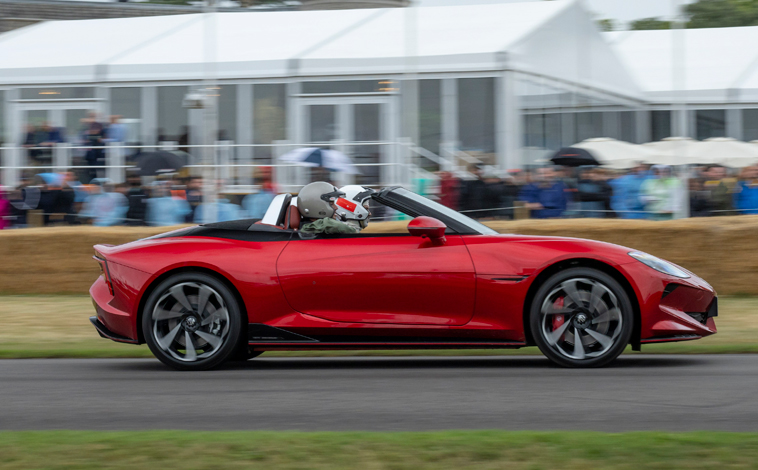
MG Cyberster wows Goodwood crowds
MG returned to the Goodwood Festival of Speed with a high voltage display [...]
Festival of Speed debut for Cyberster
MG Motor UK has confirmed that its revolutionary new Cyberster sports car will [...]
MG returns to its epic sports car roots
A pre-production design model of MG’s dramatic new sports car, the Cyberster, has [...]


